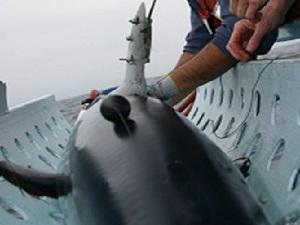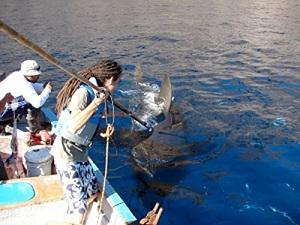Erick Cristóbal Oñate González
The aim of the project is to couple satellite and acoustic tagging methods with genetic analyses to document the habitat of the juvenile white sharks in the Eastern North Pacific.
The juvenile white sharks have been caught as by-catch in the Bahía Vizcaíno area and the Gulf of California since at least 30 years ago. Due their small sizes, it is hypothesized that Bahía Vizcaíno is a nursery area for this specie. But, because the fisheries are in different sites of the bay, it is necessary to locate the places inside the bay and how that the smaller sharks (less than 175cm TL – total length) use it the most time, and assess its seasonality. That is why we will use an acoustic tracking of juveniles inside this bay and its lagoons.

1
At the Gulf of California, the size of white sharks caught or observed is bigger than those from Bahía Vizcaíno. Unlike Bahía Vizcaíno, there are not places inside the gulf that are considered as aggregation sites. So, it is necessary to use satellite tags to know how the white sharks are moving inside and outside the gulf.

The results of this project will be used to increase awareness in the local fishing society about the need of protect and conserve the white sharks. But we know that this species migrates between California and Isla Guadalupe, and Baja California's coast and the Gulf of California, and some degree of connectivity between different white sharks of Eastern North Pacific seems obvious. So, we want to study the degree of genetic relatedness between white sharks of the Gulf of California and Bahía Vizcaíno and those from other areas, using genetic analyses.
Once we answer these questions, we pretend to have meetings with the fishermen and stakeholders and propose to change the fishing areas, change fishing season, or change fishing gears. We will use the results from the genetic analyses to propose better international management of the species, monitoring the juveniles that move near shore, and offshore satellite tracking of the adults’ sharks, besides the fishing society awareness in both countries (Mexico and USA). The main use of the results will be to let know the fishing society the importance of the white shark’s protection and the conservation of the habitat and ecosystem.